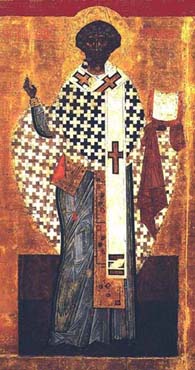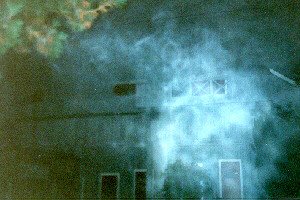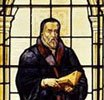
Advent begins on Sunday, December 3. On this first Sunday of Advent you may well see an Advent wreath in your sanctuary. In some parishes the beginning of Advent is a time for the
hanging of the green, decoration of the church with evergreen wreaths, boughs, or trees that help to symbolize the new and everlasting life brought through Jesus the Christ. Some churches have a special weekday service, or the first Sunday evening of Advent, or even the first Sunday morning of Advent, in which the church is decorated and the Advent wreath put in place. This service is most often primarily of music, especially choir and hand bells, and Scripture reading, along with an explanation of the various symbols as they are placed in the sanctuary.
The Advent wreath is an increasingly popular symbol of the beginning of the Church year in many churches as well as homes. It is a circular evergreen wreath (real or artificial) with five candles, four around the wreath and one in the center. Since the wreath is symbolic and a vehicle to tell the Christmas story, there are various ways to understand the symbolism. The exact meaning given to the various aspects of the wreath is not as important as the story to which it invites us to listen, and participate.
The circle of the wreath reminds us of God Himself, His eternity and endless mercy, which has no beginning or end. The green of the wreath speaks of the hope that we have in God, the hope of newness, of renewal, of eternal life. Candles symbolize the light of God coming into the world through the birth of His son. The four outer candles represent the period of waiting during the four Sundays of Advent, which themselves symbolize the four centuries of waiting between the prophet Malachi and the birth of Christ.
The colors of the candles vary with different traditions, but there are usually three purple or blue candles, corresponding to the sanctuary colors of Advent, and one pink or rose candle. One of the purple candles is lighted the first Sunday of Advent, a Scripture is read, a short devotional or reading is given, and a prayer offered. On subsequent Sundays, previous candles are relighted with an additional one lighted. The pink candle is usually lighted on the third Sunday of Advent. However, different churches or traditions light the pink candle on different Sundays depending on the symbolism used (see above on
Colors of Advent). In Churches that use a
Service of the Nativity, it is often lighted on the fourth Sunday of Advent, the final Sunday before Christmas.
The light of the candles itself becomes an important symbol of the season. The light reminds us that Jesus is the light of the world that comes into the darkness of our lives to bring newness, life, and hope. It also reminds us that we are called to be a light to the world as we reflect the light of God's grace to others (Isa 42:6). The progression in the lighting of the candles symbolizes the various aspects of our waiting experience. As the candles are lighted over the four week period, it also symbolizes the darkness of fear and hopelessness receding and the shadows of sin falling away as more and more light is shed into the world. The flame of each new candle reminds the worshippers that something is happening, and that more is yet to come. Finally, the light that has come into the world is plainly visible as the Christ candle is lighted at Christmas, and worshippers rejoice over the fact that the promise of long ago has been realized.
The first candle is traditionally the candle of Expectation or Hope (or in some traditions, Prophecy). This draws attention to the anticipation of the coming of a Messiah that weaves its way like a golden thread through Old Testament history. As God’s people were abused by power hungry kings, led astray by self-centered prophets, and lulled into apathy by half-hearted religious leaders, there arose a longing among some for God to raise up a new king who could show them how to be God’s people. They yearned for a return of God’s dynamic presence in their midst.
And so, God revealed to some of the prophets that indeed He would not leave His people without a true Shepherd. While they expected a new earthly king, their expectations fell far short of God’s revelation of Himself in Christ. And yet, the world is not yet fully redeemed. So, we again with expectation, with hope, await God’s new work in history, the second Advent, in which He will again reveal Himself to the world. And we understand in a profound sense that the best, the highest of our expectations will fall far short of what our Lord’s Second Advent will reveal!
The remaining three candles of Advent may be associated with different aspects of the Advent story in different churches, or even in different years. Usually they are organized around characters or themes as a way to unfold the story and direct attention to the celebrations and worship in the season. So, the sequence for the remaining three Sundays might be Bethlehem, Shepherds, Angels. Or Peace, Love, Joy. Or John the Baptist, the Magi, Mary. Or the Annunciation, Proclamation, Fulfillment. Whatever sequence is used, the Scripture readings, prayers, lighting of the candles, the participation of worshipers in the service, all are geared to telling the story of redemption through God’s grace in the Incarnation.
The third candle, usually for the Third Sunday of Advent, is traditionally Pink or Rose, and symbolizes Joy at the soon Advent of the Christ. Sometimes the colors of the sanctuary and vestments are also changed to Rose for this Sunday. However, as noted above, increasingly in many churches, the pink Advent candle is used on the fourth Sunday to mark the joy at the impending Nativity of Jesus.
Whatever sequence is adopted for these Sundays, the theme of Joy can still be the focus for the pink candle. For example, when using the third Sunday to commemorate the visit of the Magi the focus can be on the Joy of worshipping the new found King. Or the Shepherds as the symbol for the third Sunday brings to mind the joy of the proclamation made to them in the fields, and the adoration expressed as they knelt before the Child at the manager. If used on the fourth Sunday of Advent, it can symbolize the Joy in fulfilled hope.
The center candle is white and is called the Christ Candle. It is traditionally lighted on Christmas Eve or Day. However, since many Protestant churches do not have services on those days, many light it on the Sunday preceding Christmas, with all five candles continuing to be lighted in services through
Epiphany (Jan 6). The central location of the Christ Candle reminds us that the incarnation is the heart of the season, giving light to the world.
Source:
Dennis Bratcher, The Season of Advent: Anticipation and Hope
































